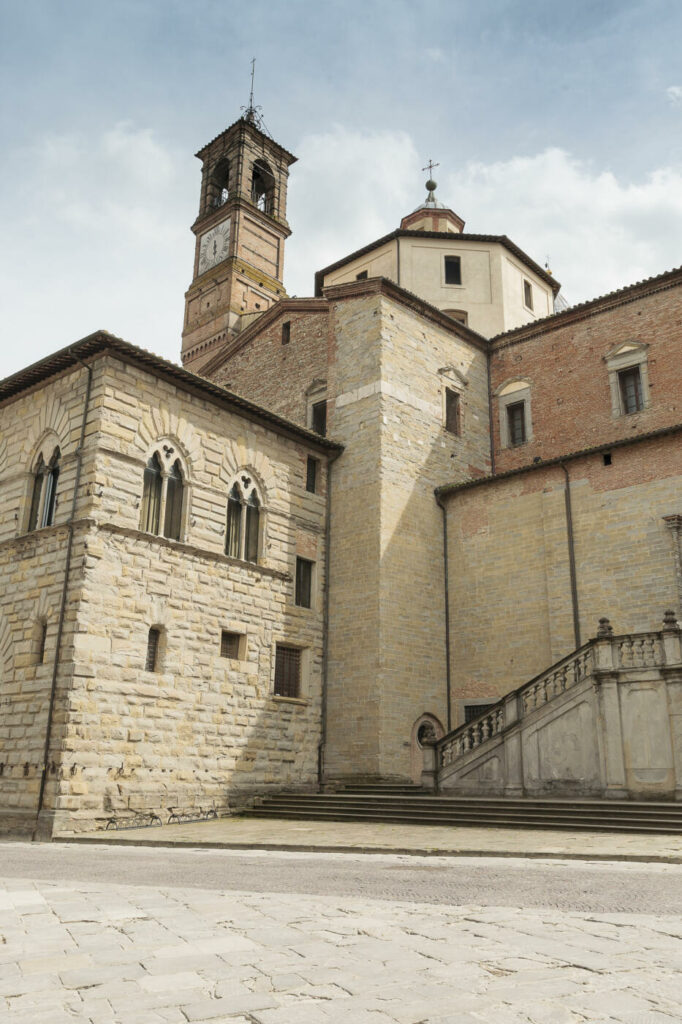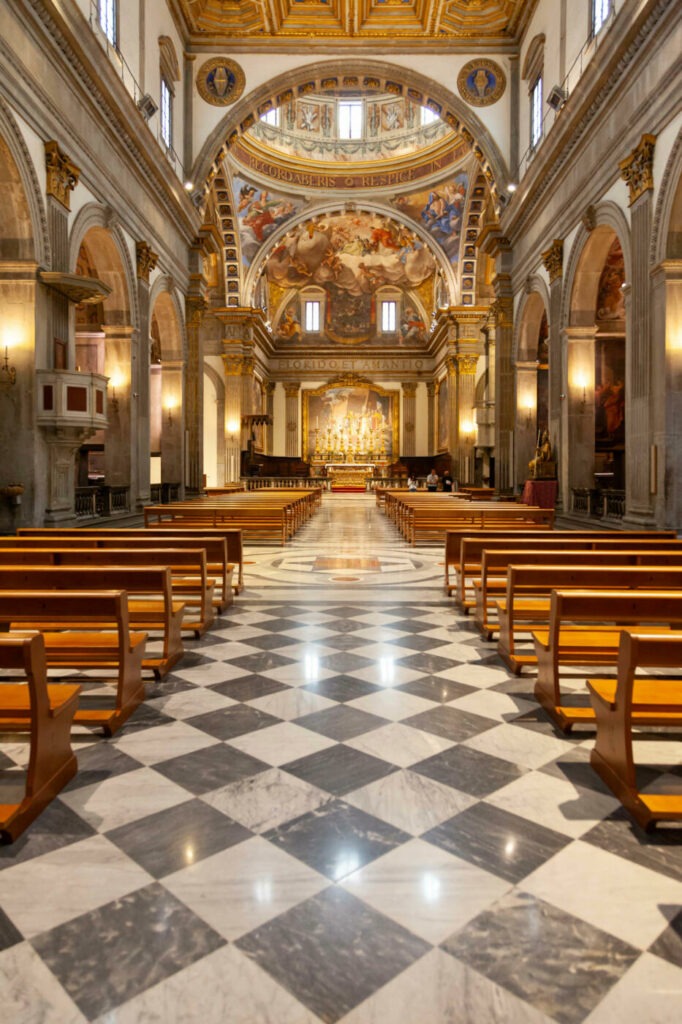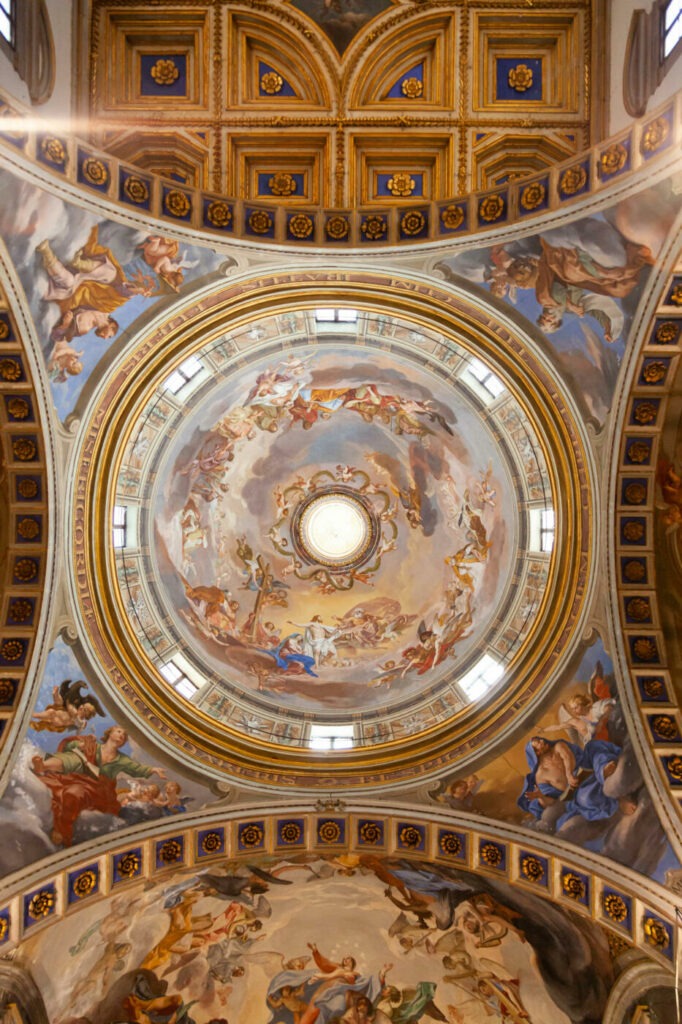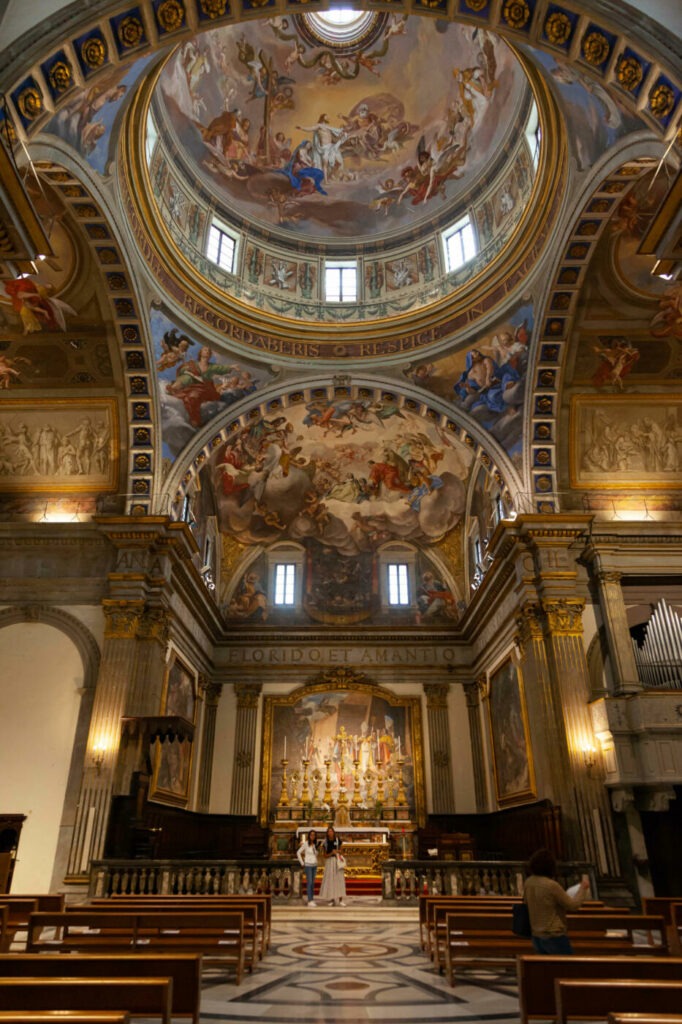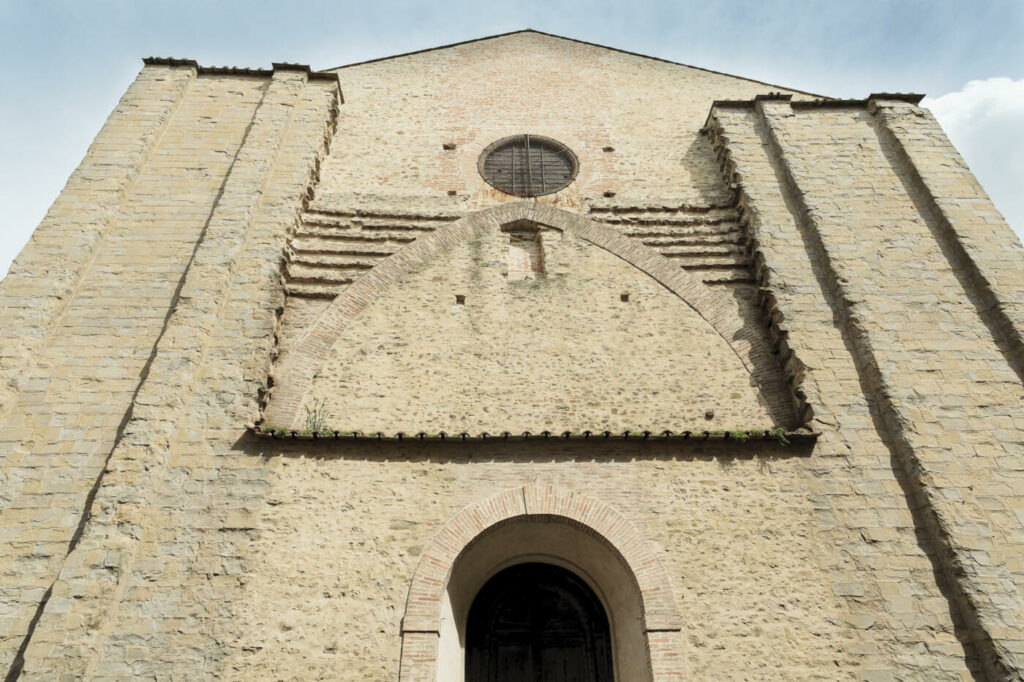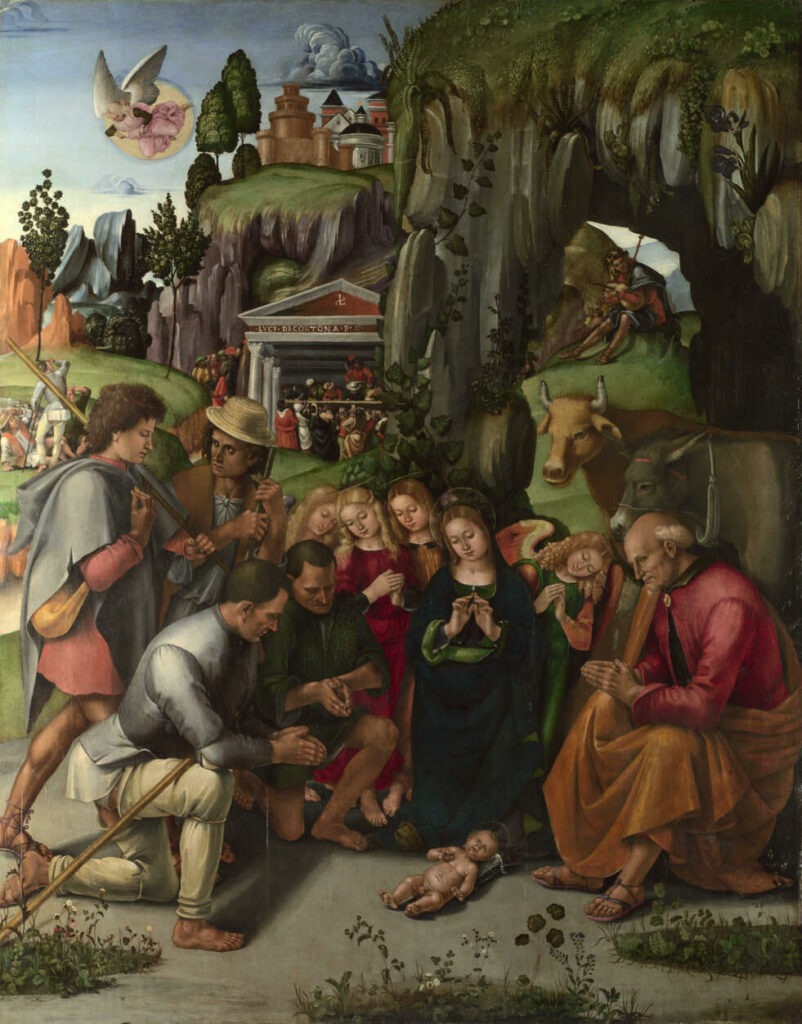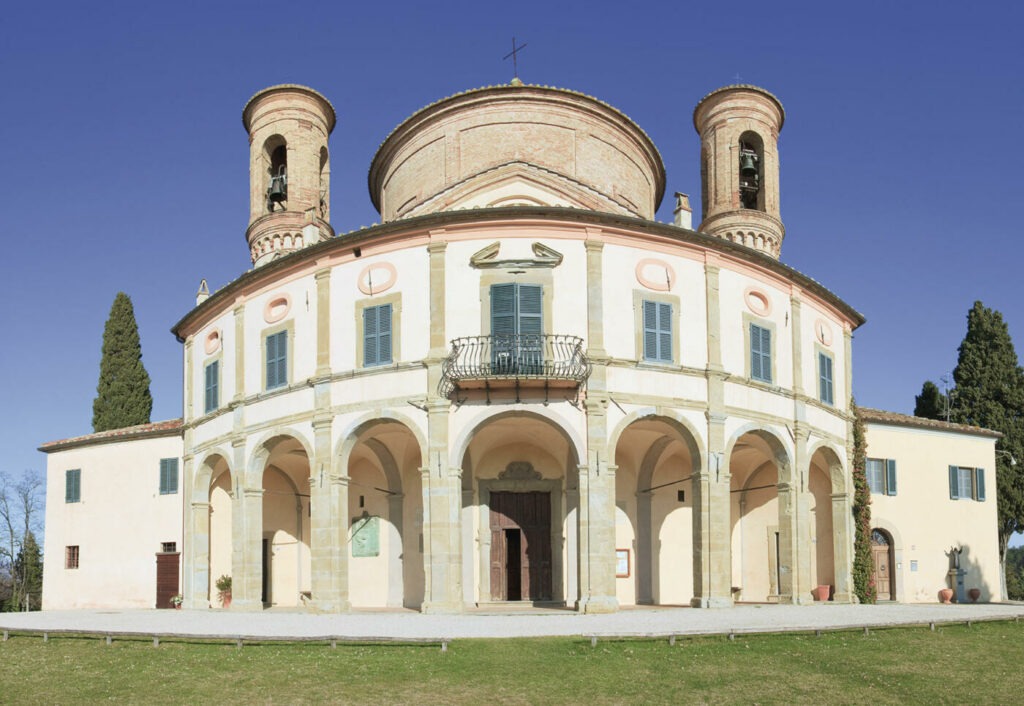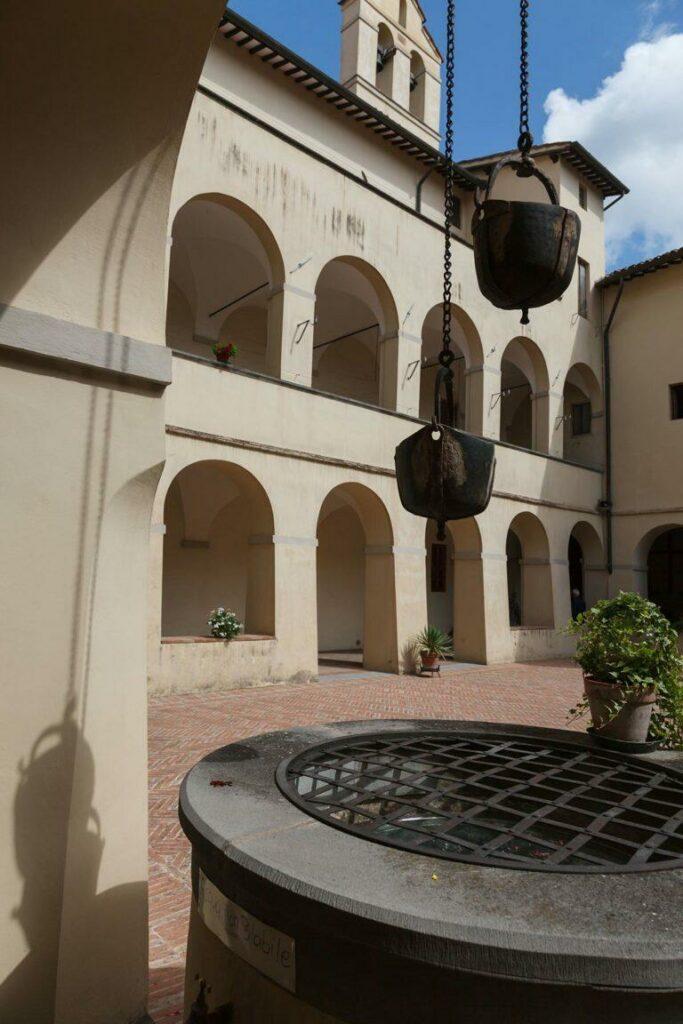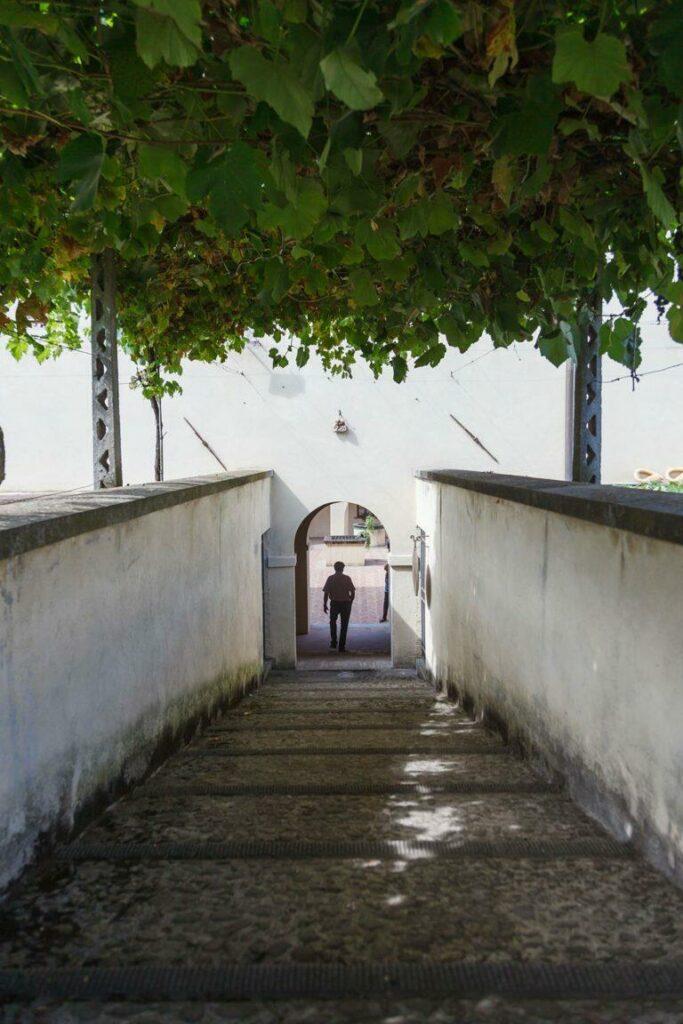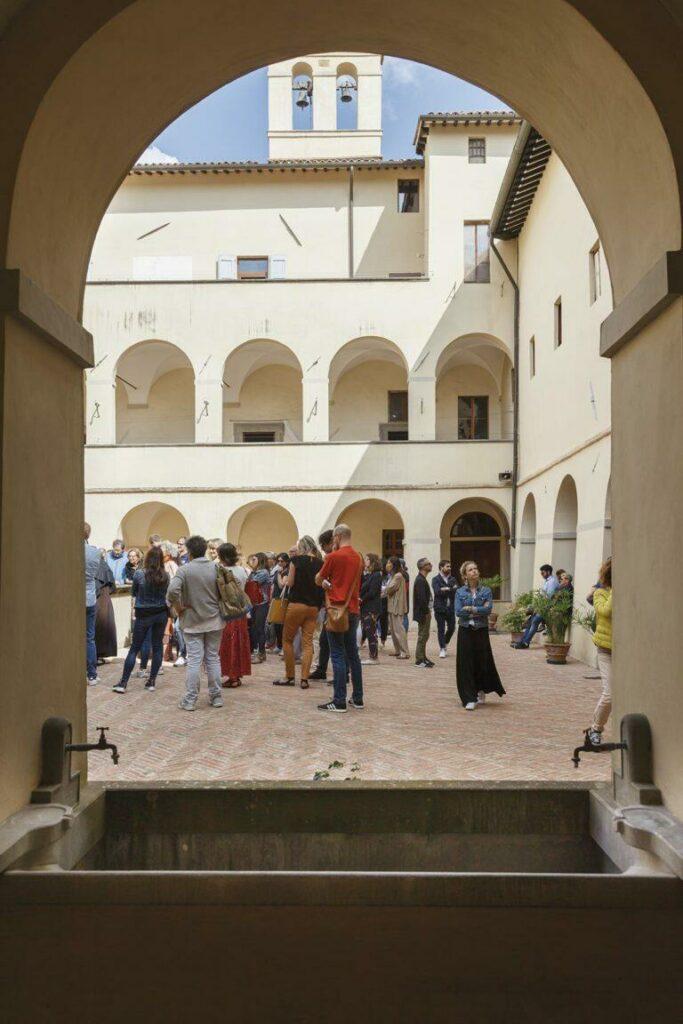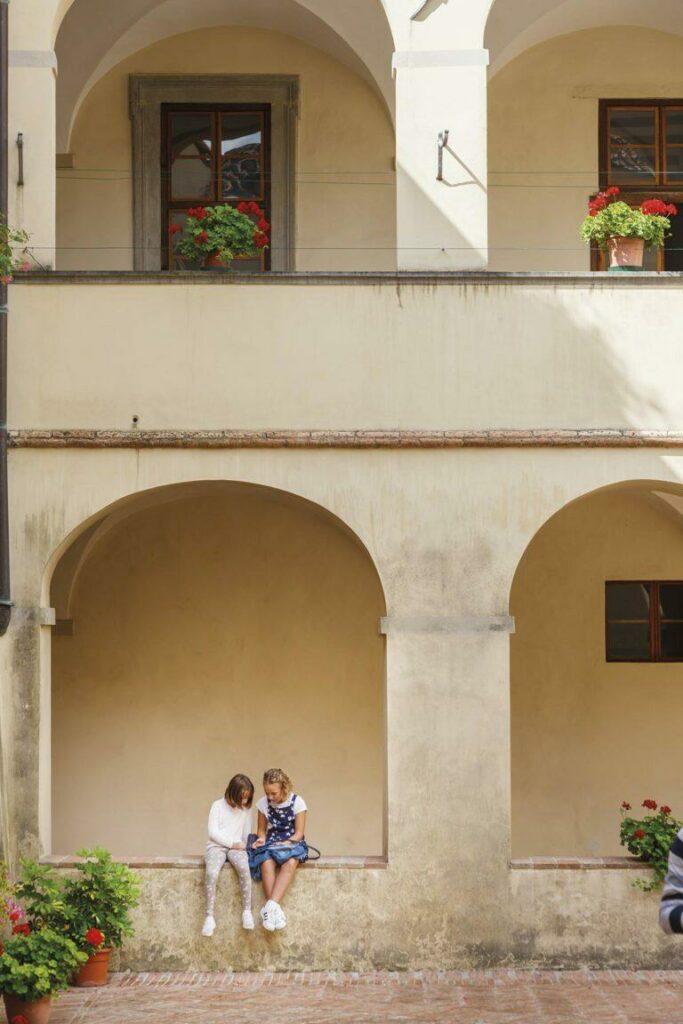Città di Castello
The Churches of
Città di Castello
The churches of Città di Castello
The Duomo, the Cathedral of Saints Florido and Amanzio
The cathedral is certainly one of the town’s oldest buildings.
According to legend, it rises on the ruins of an old temple dedicated to the Goddess of Happiness built by Pliny the Younger in the 1st century CE.
The perimeter of the old temple is visible on the crypt floor.
The beginnings of the cathedral go back to the patron saint of Città di Castello, St. Florido, who with St. Amantius rebuilt the town after a siege by the Goths in 542 CE.
The Cathedral has been modified and restored many times over the centuries.
The round bell tower is testimony to the restoration work done in the 9th century, while the north side and its portal date back to the late 14th century.
The current appearance of the Cathedral was created during the Renaissance from 1494 to 1529.
The 17th-century façade is unfinished and the main staircase was built in the late 19th century.
The basilica was planned on a Latin Cross and has a central nave with side chapels.
The 17th-century panelled ceiling, with its cornices, friezes and rose windows, was created by local masters.
The floor and baptistery were realised in the early 1800s by masters from Pisa.
SAINT DOMENIC
This monumental church is a large and imposing building with one nave and a trussed roof.
The façade is unfinished and the portal on the left side dates back to the 1400’s.
As you enter the church, you are immediately struck by the sheer size of the interior and the austerity of the medieval architecture, which was restored in the early 1900’s.
The church contains several partially ruined frescos attributed to masters of the schools in Umbria and Marche.
SAINT FRANCIS
The church dates back to the 14th century and has preserved its original Latin Cross plan and various external elements from that period.
The 18th century restoration work is especially evident inside, where it was completely redone in a baroque style between 1707 and 1718.
During the Renaissance, the church contained works by major artists of that time: Raphael painted a “Marriage of the Virgin” for the Franciscans (now in the Brera Museum in Milan), Luca Signorelli painted an “Adoration of the Shepherds” (now in the National Gallery in London) and Giorgio Vasari created a Chapel for Vitelli Family (the first on the left when entering from the back of the church).
The Renaissance had a very strong influence on the architecture of Città di Castello, as it was an exceptionally vital artistic period. In fact, the building in the background of Raphael’s “Marriage of the Virgin”, which he painted in Città di Castello for the Church of St. Francis in 1504, clearly resembles of the imposing Sanctuary of Belvedere
Sanctuary of the Madonna di Belvedere in Città di Castello
On a hilltop five kilometres from the historic centre of Città di Castello stands the baroque Sanctuary of the Madonna of Belvedere.
The building has a semi-circular portico with a vault supported by large pillars, above which the windows of the sanctuary rooms look out.
The church is planned on a Greek cross with four short arms covered by a dome placed between two majestic bell towers.
From a distance, the complex appears as a large, round church and is often compared to the famous Sanctuary of the Madonna of St. Luke in Bologna due to its similar shape and hilltop position.
The church interior is embellished with plasterwork and decorations realised by the famous local plasterer Antonio Milli in the 1700s.
The pillars have 12 niches containing plaster statues of the town’s patron saints:
- St. Crescentino
- St. Cordonio
- Blessed Margaret
- St. Illuminato
- St. James
- St. Amantius
- St. Florido
- St. Peter
- St. Donino
- St. Paul
THE CAPUCHIN CONVENT OF SANTA VERONICA GIULIANI
The foundation of the Capuchin monastery, in via XI Settembre, is due to the legacy of Monsignor Giovanni Antonio Fuccioli.
The site chosen for the construction was the ancient church of San Martino, on the foundations of an old Olivetan monastery.
The construction site began in 1629/30 and the convent was inaugurated in 1643. With the terrible earthquake of 1789 it suffered serious damage and the facade of the church was completely redone reflecting the canons of neoclassicism.
The cloister is the heart of the monastery not only for its mystical value, but also for architectural solutions and details that combine, with great mastery, beauty and functionality. It gives harmony, beauty and light to the internal spaces and is central to the life of the community.
From the cloister to the east, you can access the hortus conclusus. In the garden, marked out in squares by paths, aromatic herbs and vegetables grow.
To the south, to the right of the cordonata, there are the tubs that were once used for laundry.
On this side, in addition to the fruit trees, there is also a small chicken coop dating back to the time of the foundation and which still serves today for the sustenance of the monastery.
There is no shortage of flowers with a high symbolic value and the whole thing returns a simple care of the greenery that brings back the memory of that ancient botanical wisdom that makes the garden, even with the passing of the centuries, a timeless place.
